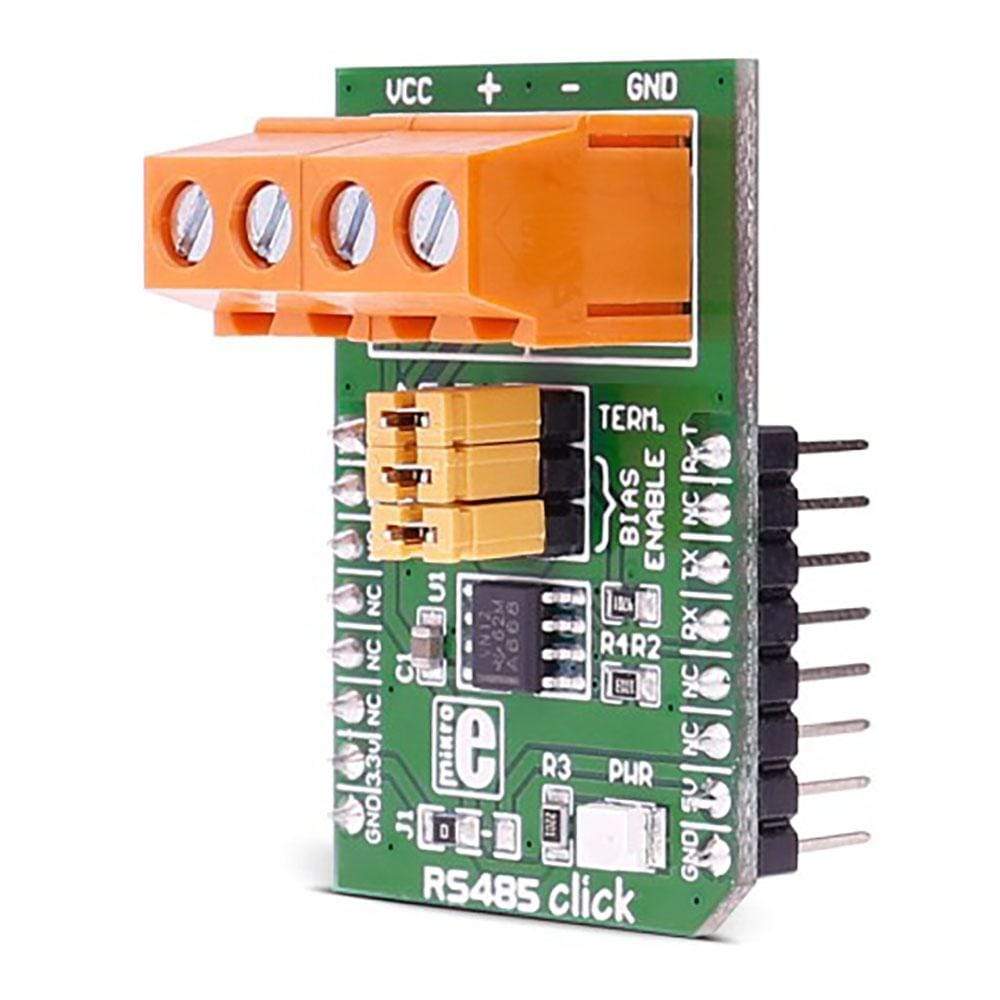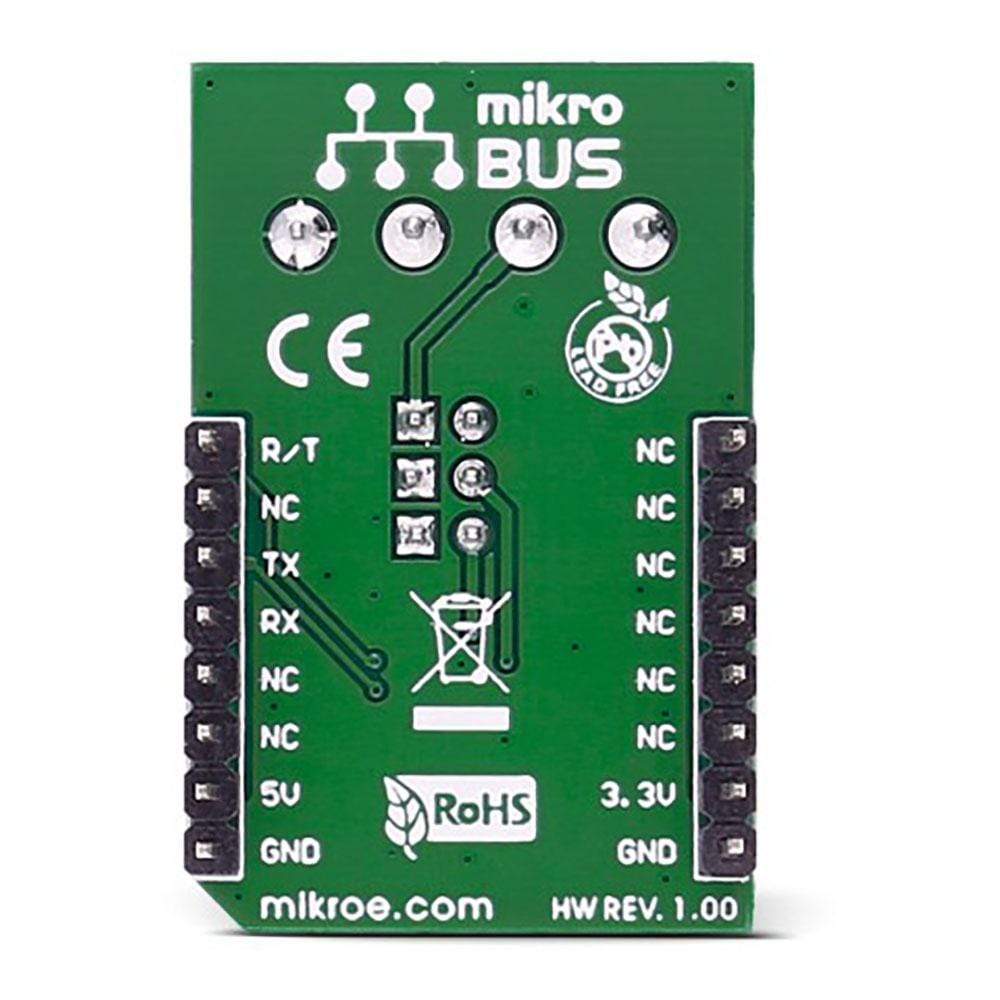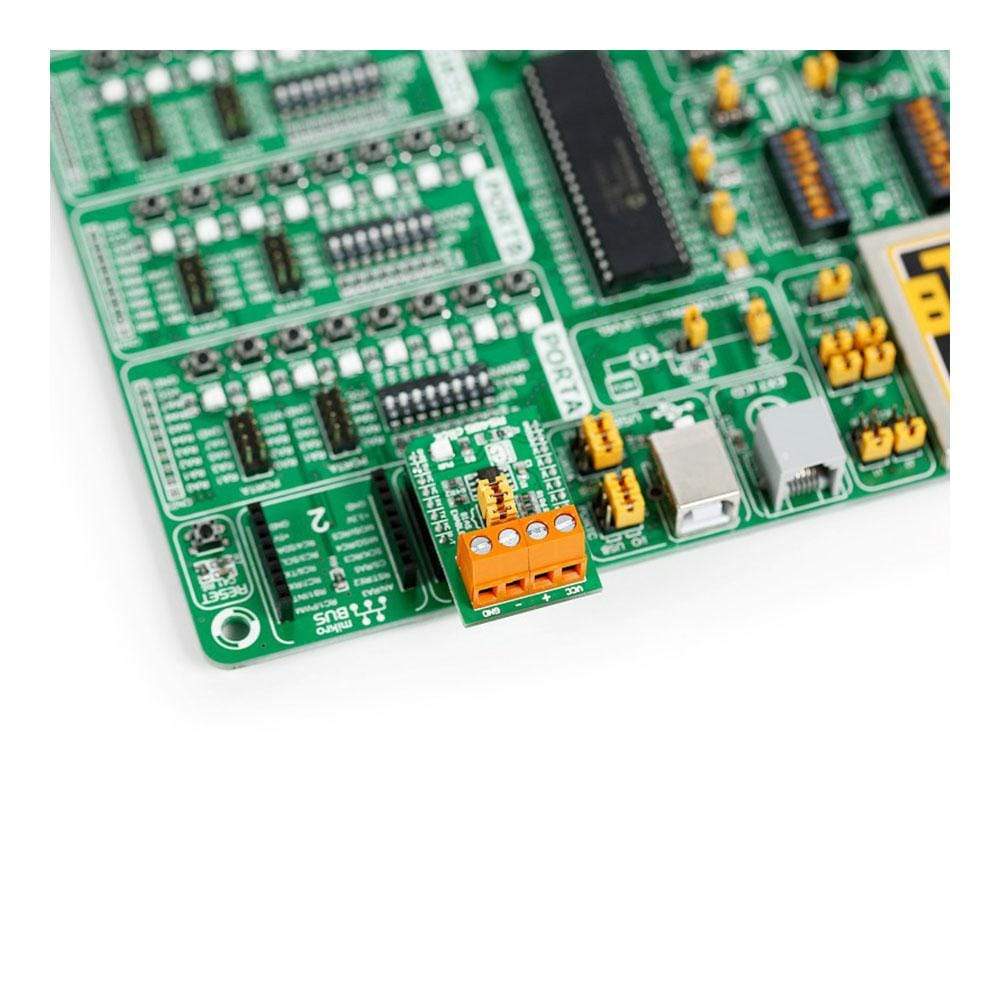



Overview
The RS-485 3.3V Click Board™ is a compact accessory board designed to add bidirectional data communication to the design. The board features a Texas Instruments SN65HVD12 differential line transceiver that provides high-speed bidirectional data communication on multipoint bus transmission lines. Compliant with EIA standards RS-485 and RS-422, this 3.3V version of RS485 Click Board™ is intended for balanced data transmission.
The RS485 Click Board™ 3.3V board features four screw terminals.
Downloads
Das RS-485 3,3 V Click Board™ ist eine kompakte Zubehörplatine, die dem Design bidirektionale Datenkommunikation hinzufügt. Die Platine verfügt über einen Texas Instruments SN65HVD12 Differentialleitungstransceiver, der bidirektionale Hochgeschwindigkeitsdatenkommunikation auf Mehrpunktbusübertragungsleitungen ermöglicht. Diese 3,3 V-Version des RS485 Click Board™ entspricht den EIA-Standards RS-485 und RS-422 und ist für eine symmetrische Datenübertragung vorgesehen.
Die RS485 Click Board™ 3,3 V-Platine verfügt über vier Schraubklemmen.
| General Information | |
|---|---|
Part Number (SKU) |
MIKROE-989
|
Manufacturer |
|
| Physical and Mechanical | |
Weight |
0.034 kg
|
| Other | |
Country of Origin |
|
HS Code Customs Tariff code
|
|
EAN |
8606015073538
|
Warranty |
|
Frequently Asked Questions
Have a Question?
Be the first to ask a question about this.




